
There are various terms used in different languages to refer to individuals who venture into space, such as “starfarer”, “navigator of the universe”, “space man”, “space + science”, “space”, and “sky”.
Professional astronauts are individuals who have dedicated their lives to space exploration.
In the past, government agencies were solely responsible for spacecraft launches, but now private companies have entered the scene after the successful launch of the private spacecraft “SpaceShipOne” into Earth’s atmosphere in 2004.
This content was originally published on the BezFormata website on January 11, 2019.
The date below indicates the publication date on the source website!
Additional information about the occasion:
Rostov-on-Don locals embraced a celestial atmosphere while celebrating Cosmonautics Day
Let’s blast off! Today, the city of Rostov-on-Don hosted a series of festive activities in honor of the 57th anniversary of the inaugural human spaceflight.
21:11 12.04.2018 Rostov161 – Rostov-on-Don

COSMONAUTICS DAY AT POLYTECHNIC UNIVERSITY
It has been almost sixty years since that memorable day in April when Yuri Gagarin became the first person to travel beyond our planet on the spacecraft “Vostok-1”.
20:32 12.04.2018 Novocherkassk Polytechnic Institute – Novocherkassk
After Yuri Gagarin made his historic orbit around the Earth, representatives from 35 different countries had the opportunity to visit space.
On April 12, Rostov-on-Don celebrated the Day of Astronautics and the 57th anniversary of the first human spaceflight.
15:02 12.04.2018 Rostov-on-Don Administration – Rostov-on-Don

Krasnosulinsk schoolchildren embark on a simulated journey in outer space.
The City Palace of Culture acquaints young enthusiasts of intergalactic adventures with the fascinating story of space exploration and organizes a magical performance program on April 11, in anticipation of Cosmonautics Day.
14:54 12.04.2018 Business Community – Rostov-on-Don
How many astronauts are currently present on Earth?
Once again, on April 12th, we commemorate Cosmonautics Day. How many astronauts are currently present on Earth?
13:31 12.04.2018 AiF Rostov-on-Don – Rostov-on-Don
Residents of Shakhty were in tears on the day of Gagarin’s historic space flight and forgot to pick up their children from kindergartens.
The people of Shakhty still vividly recall the day when a man first ventured into space. It was fifty-seven years ago that this truly momentous event occurred, not only in the annals of our nation’s history.
09:58 12.04.2018 Newspaper At Your Service – Shakhty
Novocherkassk boasts a center that fulfills the aspirations of every Soviet boy – to transform ordinary individuals into extraordinary cosmonauts.
08:24 12.04.2018 161.Ru – Rostov-on-Don
Exam: Yura, we have mastered it all!
On the 12th of April, 1961, Yuri Gagarin, a Soviet cosmonaut, beamed with joy, uttered the words: “Let’s embark on this adventure!” and became the pioneer to soar into the vast expanse of space.
06:19 12.04.2018 161.Ru – Rostov-on-Don


The Social Service Center of the Zheleznodorozhny District of Rostov-on-Don recently organized a musical event called “The First Flight into Space” to celebrate “Cosmonautics Day”.
The local business community
In April, Rostov-on-Don hosted a series of festive events in honor of Cosmonautics Day and the 57th anniversary of the first human space flight.
The local business community
Rostov-on-Don celebrated Cosmonautics Day and the 57th anniversary of the first human space flight in April with various festivities.
The local business community
The City Palace of Culture organized an event on April 11, the day before Cosmonautics Day, to educate young enthusiasts about the fascinating journey of space exploration. Additionally, they entertained the audience with an enchanting fairy tale show program. This initiative aimed to engage the business community and foster a love for galactic adventures among the younger generation.
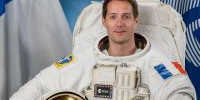
Educational establishments in the Proletarsky District are getting ready for the commemoration of April 12 – World Astronautics Day and the 57th anniversary of the inaugural human spaceflight.
Business Community

There was a tragic car accident near Shakhty that resulted in the death of a woman. The driver and four children also sustained injuries and were taken to the hospital.

A fire broke out at the landfill, leaving authorities puzzled whether it was an act of arson or simply careless handling of fire. The incident involved a massive pile of dry branches, inexplicably stored near a school in Donetsk, which ignited like a box of matches.
The local newspaper, Gazeta Novosti, reported on the incident.
A case of fraud left a resident of Volgodonsk devastated after all of her money was swindled by individuals working at a supposed “brokerage” office. The victim, a 20-year-old girl, fell prey to these sophisticated fraudsters who even managed to orchestrate a “profit” of 75 thousand.
An article published in the Taganrogskaya Pravda newspaper shed light on the incident.
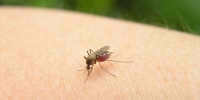

Moreover, these mosquitoes are quite extraordinary! We have previously informed you about the peculiar response of numerous inhabitants of Rostov to mosquito bites during this year (article “What types of mosquitoes are present in Rostov this year?”).
Big-Rostov.Ru
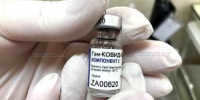

Image: ru.freepik.com Each year, approximately 500 million cases of acute respiratory viral infections are reported globally, with Russia recording around 30 million cases of influenza and acute respiratory viral infections each year.
Source: Bloknot-Taganrog.Ru.

A review of the exhibition “Ataman Platov – a legend of the Don and Russia!” took place at the Baklannikovskaya rural library on August 17.
The exhibition was held at the V.A. Zakrutkin Library.
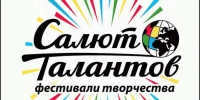
The ArtCon event is an extensive undertaking designed for winners of creative festivals and competitions. It is scheduled to take place in St. Petersburg and will span a duration of two days!
V-Pravda.Ru
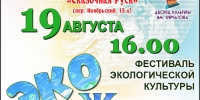
The Festival of Ecological Culture “Eco Life” will take place at the Folk Art Center “Fairy Tale Rus” (Noyabrskiy per., 13a) on August 19 at 16.00.
Source: V-Pravda.Ru
It is quite an accomplishment for a man to spend an hour, a day, or even a month in outer space. Over the course of more than 60 years of space exploration, numerous impressive achievements have been made by individuals who have dedicated themselves to advancing science and securing the future of humanity. However, it was the Soviet cosmonauts who initially held the record for the longest stays in both orbiting spacecraft and outer space. Even today, Russian cosmonauts continue to push the boundaries and set new world records in space.




New World Record Holders
Gennady Ivanovich Padalka, a native of Krasnodar, holds the title of the absolute world record holder for space missions. He is a Hero of Russia and has completed five missions, spending a total of 878 days in space.
Before 2015, the Earth’s previous record holder for the longest total time spent in space over a decade was Sergei Konstantinovich Krikalev, a Hero of the Soviet Union and Hero of the Russian Federation.
His remarkable achievement included completing six space flights, accumulating a total of 803 days in space.
Of particular interest was his second mission that took place in 1990. After spending almost 312 days at the Mir station, Krikalev returned to Earth in March 1992. During his time in orbit, significant changes had occurred on Earth – he had left the Soviet Union and returned to the Russian Federation.
The third highest record in the history of Russian cosmonautics and the fifth highest in the world belongs to Alexander Yurievich Kaleri, a Hero of Russia.
The total duration of his five space missions is 759 days.
As a result of this accomplishment, he was not only awarded Russian orders, but also the HACA medals. Additionally, he was the first person to receive the title “Pilot-Cosmonaut of the Russian Federation.”
Doctor-cosmonaut Valery Vladimirovich Polyakov has completed two space missions: 240 days from 1988-89 and 438 days from 1994-95.
Following his first mission, he was honored with the title of Hero of the Soviet Union, as well as the Legion of Honor in France and numerous other awards. His second expedition set a record, as no one had ever spent more time in space on a single mission than Valery Polyakov. This achievement earned him the title of Hero of Russia and secured his place in the history of space exploration.
The record holder for the number of spacewalks and the total duration of work in outer space was Anatoly Yakovlevich Solovyev, a cosmonaut from the Soviet Union and Russia.
During his five expeditions, he spent a total of 651 days in space. Throughout 16 missions, Solovyev accumulated 82 hours and 21 minutes outside the space station.
Even today, this remains an unparalleled world record, despite the fact that Solovyev’s last time wearing a spacesuit was in 1997-1998 when he served as the commander of the Mir spacecraft.
Here are the top 5 Russian cosmonauts with the longest time spent in space orbit:
- 1. Gennady Padalka: 878 days, 11 hours, 29 minutes
- 2. Sergei Krikalev: 803 days, 9 hours, 38 minutes
- 3. Alexander Kaleri: 769 days, 6 hours, 33 minutes
- 4. Valery Polyakov: 678 days, 16 hours, 34 minutes
- 5. Anatoly Solovyov: 651 days, 3 minutes
Space missions
In recent years, manned expeditions to space have become a regular occurrence, lasting for 6-8 months.
During this time, it is possible to effectively conduct planned research and carry out experimental programs.
Interestingly, the least amount of space exploration is actually done in orbit. These studies can be conducted from Earth using information obtained from satellites. So what do astronauts do?
Biologists and physiologists conduct research on the impact of zero gravity on the human body, as well as the changes that occur following prolonged exposure to microgravity. Typically, they utilize a small collection of mice, rats, guinea pigs, fish, or insects to investigate physiological processes and study the long-term effects of space travel on offspring.
Astronauts also engage in studying bacterial mutations and cultivating miniature vegetable gardens to observe how plants develop in the presence of constant cosmic radiation and weightlessness. Additionally, various physical and chemical experiments in the fields of physics and chemistry are conducted.
For several weeks, the Earth’s orbit becomes a place to reside, and the spacecraft serves as both a workplace and a residence.
The occupation of an astronaut falls into a high-risk category. The strains experienced by the astronaut during the journey resemble the emotional and psychological impacts of a chronically stressed businessperson.
Throughout extended journeys, medical equipment constantly monitors the physiological functions of all the astronauts’ bodily systems. To maintain their health during the journey and rapidly rehabilitate upon returning to Earth, they must engage in intensive exercises on simulators and wear specialized stress suits.
On any lengthy space expedition, the presence of an onboard physician is essential. Ideally, they also perform the functions of a psychotherapist.
Shared Space Living
Living on orbital stations presents astronauts with a multitude of challenges that most people on Earth never even consider. For instance, dropping a crumb is not an option, as in the absence of gravity, even a small solid particle or a droplet of liquid can find its way into the respiratory system.
Eating and drinking in space is also not as straightforward as it is on Earth. Traditional tubes have been replaced with lightweight freeze-dried food pouches, which only require the addition of hot water to become a substantial meal. Bread is provided in small, bite-sized pieces. To prevent food from floating away, tables are equipped with special clamps for spoons and forks.
According to regulations, astronauts are allocated 2.2 liters of water per day, but they only consume 0.75 liters.
In general, it is not an easy task to meet the natural human needs in outer space. One can recall the incident that occurred on the ISS in late 2019, when the toilets on both the Russian and American modules malfunctioned. As a result, the astronauts had to resort to using “diapers”. This situation became even more tense when repairs were needed for the toilet in the American segment.
In the past, orbital stations used to have a closed-loop water system where urine was recycled and the liquid was reused.
Although the modern ISS has a water system, managing water in space still remains a major challenge.
It can be quite challenging to wash while suspended in space, as the water does not flow down the body but rather hangs in the air. This means that every drop of water must be collected. Typically, astronauts rely on wet wipes to clean themselves. However, during long expeditions, towels alone are not sufficient.
As time went on, a “space bath” was invented. This unique design allows clean water to spread over the body, while the dirty water is purified and reused.
The water is supplied from above using a strong airflow. When astronauts use this device, they must breathe through a special tube and wear protective goggles.
Instead of washing their clothes, astronauts simply gather their dirty laundry in a special container. This container is then removed from the spacecraft and burned up in the atmosphere.
There are numerous compartments on the spacesuits to prevent tools from being scattered all over the station while working.
For the convenience of movement, numerous handrails have been installed throughout. Crew members sleep in compact cabins, ensuring stability for their bodies.
The challenges faced by space station residents go beyond questions of hygiene and comfort.
While in orbit, the level of radiation is hundreds of times higher than that on the Earth’s surface.
Astronauts are exposed to significant levels of radiation while working in outer space or during solar flares. Lengthy missions have a substantial impact on the health of space explorers. However, Russian cosmonauts have developed strategies to mitigate this impact.
It is common knowledge that the initial individual to venture into space was Yuri Gagarin, a Soviet pilot-cosmonaut. This momentous event occurred on April 12, 1961, and is widely recognized worldwide. However, there continues to be speculation surrounding the true first person to journey into space. Conspiracy theorists argue that prior to Gagarin, numerous individuals attempted and failed to conquer space. The international press began reporting on space travelers in the late 1950s, and the Guinness Book of Records credits another Soviet citizen, Vladimir Ilyushin, as the first. The most audacious theories even suggest that Gagarin was not the first, but rather the twelfth person to venture into space.
The primary interpretations of the first human in space
The commonly accepted narrative, acknowledged globally, asserts that Yuri Gagarin was the very first individual to venture into space. On April 12, 1961, aboard the spacecraft “Vostok-1,” he ascended into orbit, completing a revolution around the Earth and spending 108 minutes in space. His iconic exclamation, “Let’s go!” and his radiant smile became renowned worldwide. In the Soviet Union, he was revered as a national hero, surpassing all leaders, actors, and athletes in adoration. Gagarin served as an inspiration for many young boys who dreamed of becoming cosmonauts and exploring the cosmos. His visits to other nations were met with great honor and respect. Following the war, the conquest of space became the most momentous and celebratory event, serving as the first significant source of tremendous national pride. Thanks to Gagarin, the Soviet Union became the leading space-faring nation in the world.
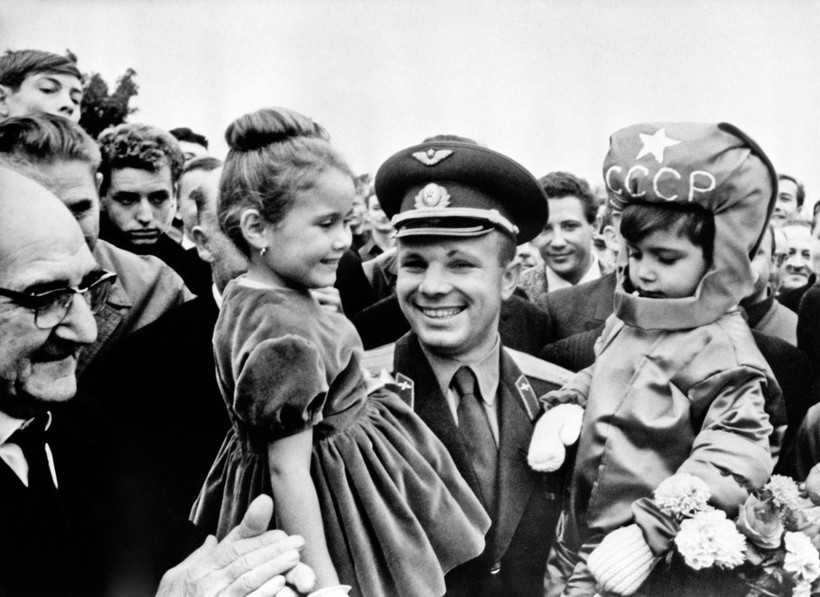
However, even prior to Gagarin’s historic flight, various speculations began to circulate suggesting that space had already been conquered. Alongside these speculations, rumors multiplied that the USSR had already launched manned spacecrafts on multiple occasions, but unfortunately, all of them ended in tragic accidents resulting in the death of the pilots. The Soviet state’s reluctance to disclose such failed attempts stemmed from the fear of tarnishing their reputation: it was deemed preferable to lose the space race rather than to reveal to the world the failures of their missions.
One of the arguments put forth by proponents of the conspiracy theory is the fact that the TASS report announcing the launch of the first spacecraft and the first human to venture into space was not released immediately at the onset of the flight, but rather 1 hour and 57 minutes later.
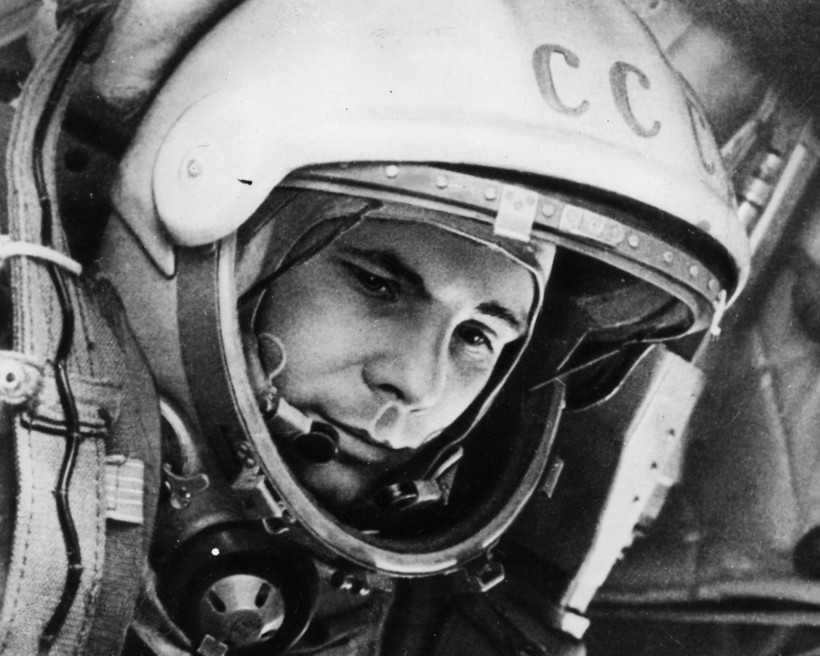
Supporters of the official version, on the other hand, present additional arguments. One of them is related to Gagarin’s helmet, which, just an hour before the flight, had the letters “USSR” painted on it by spacesuit specialist Viktor Davidyants using ordinary red paint. This was done to indicate the nationality in the event of an emergency landing on foreign soil. If people had already made space flights before Gagarin, this idea would have been implemented in a more professional manner and not in such a makeshift way.
TOP-10 main theories about the original manned spaceflight before Gagarin
- Vladimir Ilyushin – achieved the feat of being the first person to venture into space, as recognized by the Guinness Book of Records.
- Pyotr Dolgov – indeed ascended to the stratosphere, but in the year 1962.
- Alexander Belokonev – allegedly perished in space during a flight in 1959, according to reports from the United States.
- Valentin Bondarenko – a tragic accident that sparked numerous speculations.
- Sergei Shiborin, Andrei Mitkov, Alexei Ledovsky, Maria Gromova – according to the Italian Continental, they were the first individuals to experience space travel through ballistic missiles.
- Yevgeny Kiryushin – included in the “Western list” of deceased cosmonauts who journeyed into orbit.
- Ivan Kachur – reportedly perished when the spacecraft exploded during launch in 1960, as stated by Reuters.
- Gennady Zavodovsky – reportedly passed away due to a navigation malfunction.
- Alexei Grachev – allegedly went missing in space.
- Gennady Mikhailov – according to the Associated Press, died while in orbit.
Vladimir Ilyushin – officially recognized as the first cosmonaut by the Guinness Book of World Records
Whether it was a coincidence or the remarkable work of intelligence agencies, it is worth noting that exactly 24 hours before Gagarin’s spacecraft was launched, the British newspaper “Daily Walker” published an astonishing investigative article by journalist Dennis Ogden. According to Ogden, on April 7, 1961, Soviet pilot Vladimir Ilyushin, the son of the renowned aircraft designer, actually became the very first human to journey into space.
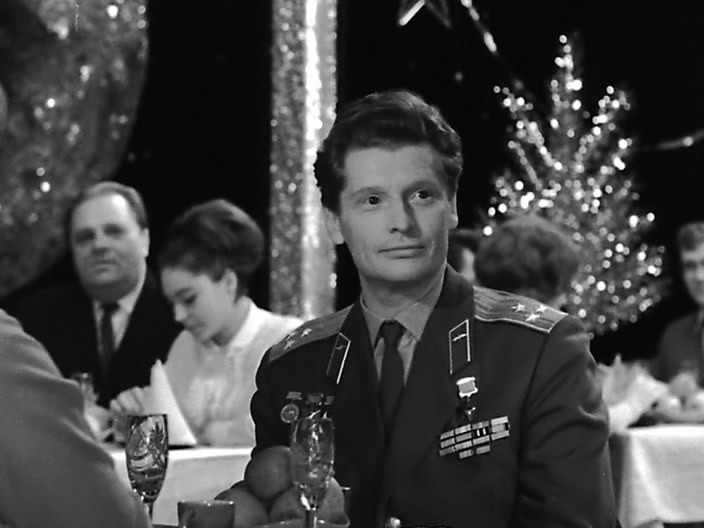
Pyotr Dolgov – an acclaimed test pilot
According to the U.S. Associated Press, Pyotr Dolgov, a renowned aviator, tragically lost his life in space on October 11, 1960, when his spacecraft exploded while in orbit. However, it is important to note that this account, like many others, contains a blend of factual information and speculation.
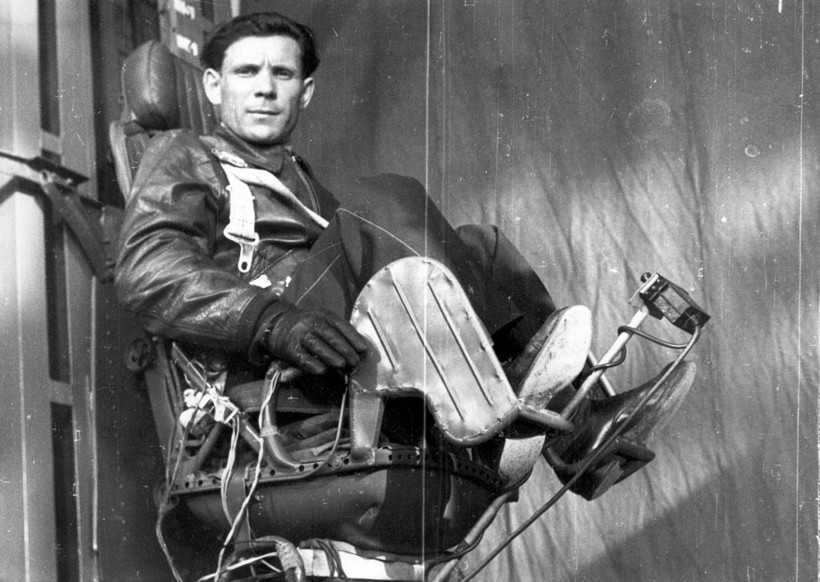
Peter Dolgov had a connection to the field of cosmonautics even before Yuri Gagarin. Sadly, it is a fact that he lost his life during a space flight. However, this tragedy occurred in the year 1962. During a test program, Dolgov took a daring leap from the stratosphere, descending from a height of over 28 km. Unfortunately, the helmet he was wearing could not withstand the intense pressure and ultimately cracked, resulting in the untimely demise of this courageous individual.
The Western media frequently mentioned this individual, alleging that he had made multiple orbital flights in 1960, 1961, and 1962, with various theories surrounding his supposed death. However, in reality, he was employed as a test technician at the Institute of Aviation Medicine and had only encountered space technology on the ground, never actually participating in any flights.
Valentin Bondarenko – a tragic, yet non-mysterious demise
The records indicate that Valentin Bondarenko embarked on his space journey 3 weeks prior to Gagarin – precisely on March 23, 1961. This individual was indeed a member of the space team, undertook flights, and met a tragic end: while conducting surdobarokamera experiments.
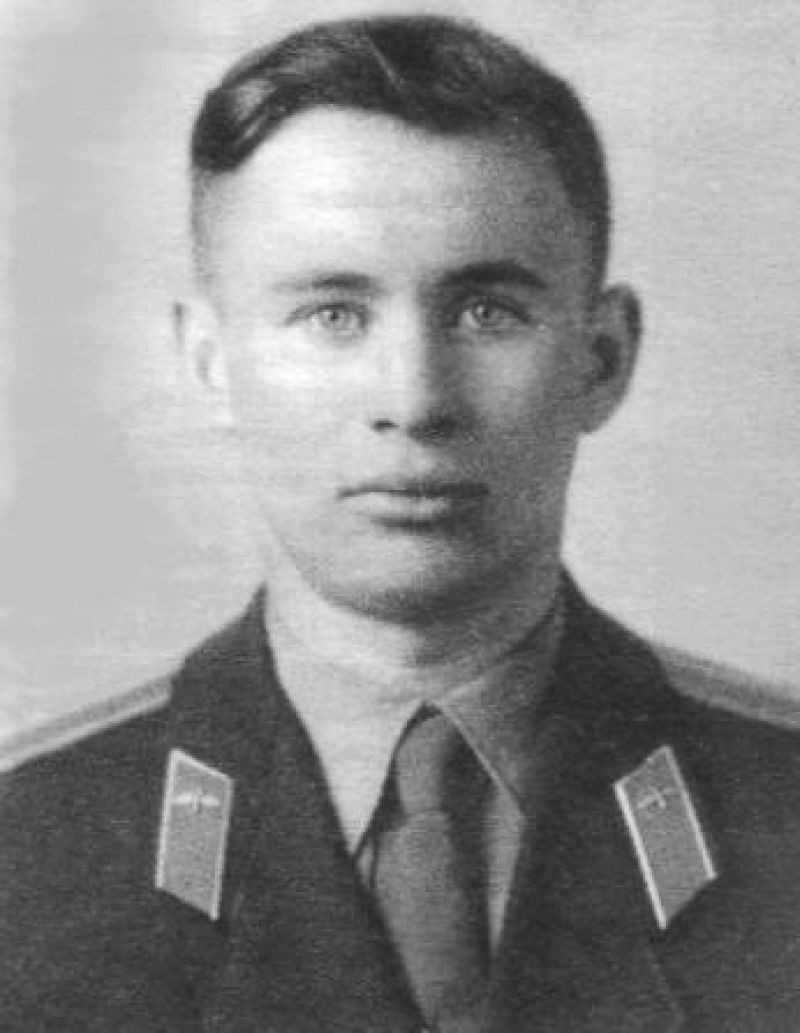
Despite not being the pioneer in space exploration, he possessed the potential to achieve that feat. As recalled by his fellow astronauts, he was the youngest and most vibrant member of the team, making his demise even more heartbreaking, especially in light of Gagarin’s triumph.
Since 1959, the Italian agency Continental has continuously aired reports regarding spaceships and their pilots supposedly operated by the USSR. The narratives were quite unique. As per these accounts, the individuals mentioned in this roster had experienced crashes during manned ballistic missile missions, while Maria Gromova had a crash while testing a rocket-propelled orbital aircraft.
Yevgeny Kiryushin: The Unsung Hero of the Space Industry
Yevgeny Kiryushin may not have the same level of recognition as other highly publicized heroes in the field, but his contributions to the space industry are no less remarkable. While his name may not be widely known, Western radio stations have broadcasted about him, attracting the attention of many who were eager to catch a glimpse of his story.
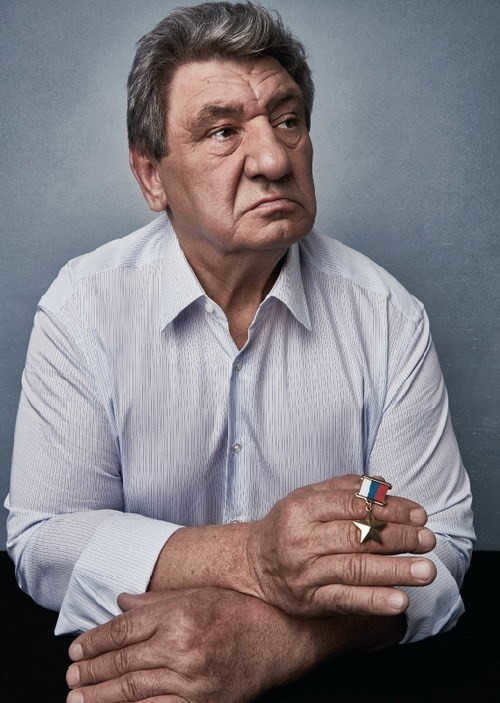
According to Kiryushin’s personal account, he has been approached by acquaintances multiple times with a bewildered statement: “Oh, are you still alive? We heard that you went on a space flight and perished.” However, the truth is that he worked as a tester for space suits and other equipment for astronauts, and he was definitely not the first to venture into space. According to official documents, he was merely a laboratory assistant.
As reported by the reputable British agency Reuters, he was the pioneering individual who made an attempt to venture into space back in 1960. However, his role in this narrative lacks any heroic elements, as it is believed that the spacecraft did not successfully complete the flight and instead met with disaster upon launch.
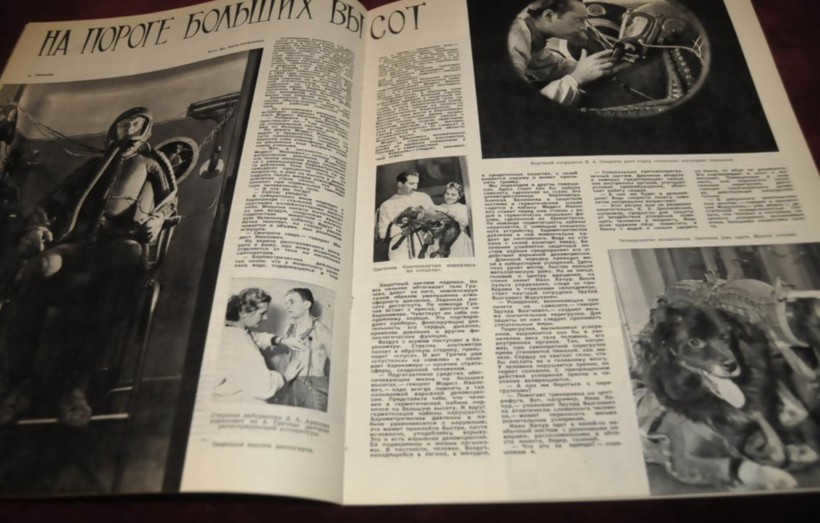
Like many others on this roster, Kachur was employed as a technician at the Institute of Space and Aviation Medicine. These individuals were included in the group of cosmonauts by foreign agencies due to a mention in the magazine “Ogonyok” in 1959, which highlighted the employees of this organization. However, since there were no reports of their successful space missions, it was assumed that these individuals perished in unsuccessful attempts.
Gennady Zavodovsky – the event’s half-truth
Gennady Zavodovsky is part of the unfortunate group of Space Institute employees interviewed by the magazine “Ogonyok”. According to the Italian agency Continental, he was believed to be lost in space during a flight on May 15, 1960. However, the truth is that on that particular date, Soviet scientists did launch a spacecraft, but it was unmanned and got lost in the vastness of the universe due to a failure in the navigation systems.
A similar rumor circulated about Alexei Grachev, just like the one about Zavodovsky. It was claimed that on November 28, 1960, his ship also embarked on a mission to explore the vastness of space, only to get lost in its depths. Once again, the news spread, this time through an Italian publication called Corriere della Sera. However, there is no concrete evidence or reliable information regarding any launches, flights, or tests taking place on that particular day.
Gennady Mikhailov – should we have faith in the Associated Press?
Gennady Mikhailov’s connection to the field of space was limited, particularly when it came to flights. Similar to his peers, he worked at the Institute of Aviation.
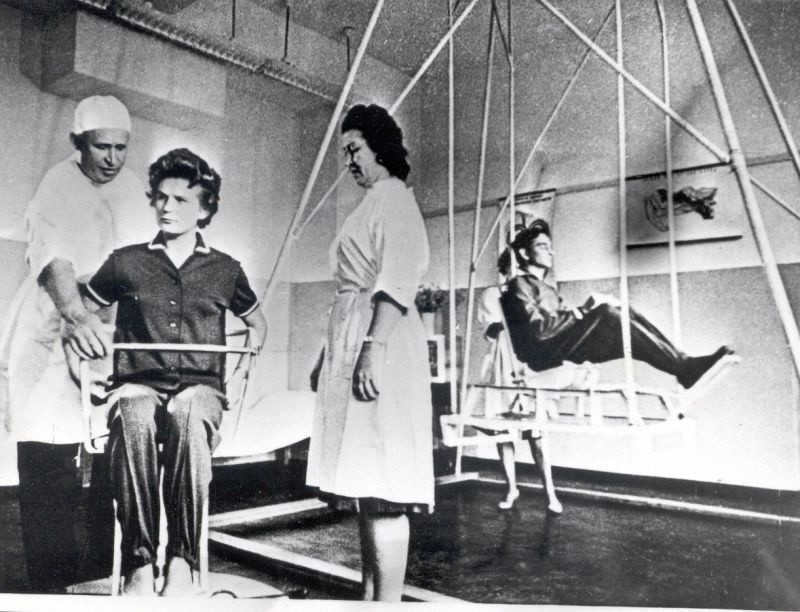
The Associated Press, a highly respected global news agency, recently reported on a failed spacecraft launch involving astronaut Mikhailov. The cause of the failure was equipment malfunction, and there is no available information on the pilot’s fate. In reality, the launch was an attempt to send a station to Venus, but it was unsuccessful, resulting in the equipment remaining in Earth’s orbit.
One theory suggesting that Yuri Gagarin was not the first man to fly into space is connected to an amusing anecdote. Several years prior to the historic event, Soviet scientists conducted extensive research on the equipment being used, which involved configuring and testing communication systems. As part of these efforts, audio recordings containing human speech were sent into orbit on satellites.
These conversations were intercepted multiple times by intelligence agencies from various countries, including:
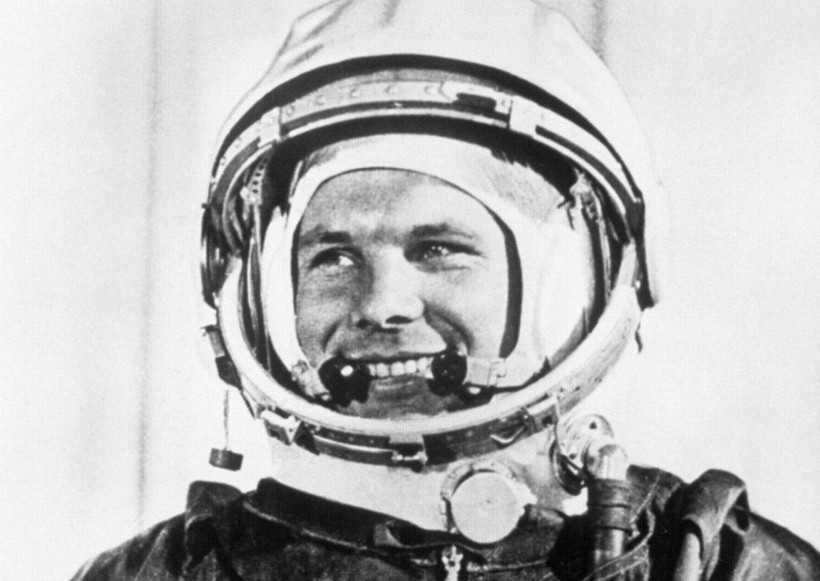
- The United States of America;
- The United Kingdom;
- The French Republic;
- Japan;
- The Italian Republic.
With every new launch, the Mission Control Center faced a growing number of rumors. In a bold move, they decided to intercept the powerful voices of the Pyatnitsky Choir, a tactic used by foreign intelligence services.
Interestingly, many of the reports from foreign media aligned with the actual dates of drone and satellite flights, as well as tests of airplanes and other equipment. To add an element of randomness, ordinary employees from the Institute of Aviation and Cosmonautics were chosen to play the role of pilots.
Video Content
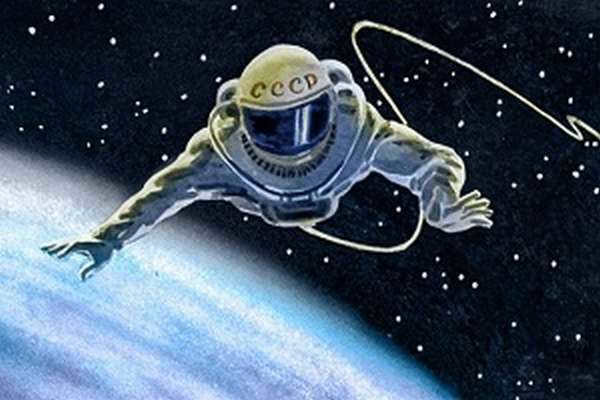
The USSR’s cosmonauts were the pioneers of the enigmatic and breathtaking expanse of space. Humanity has forever harbored a longing to establish communication with other sentient beings.
Cosmonautics possesses the wisdom about the origins of the universe and humanity itself. Could there be another celestial body within the foreseeable cosmic realm that harbors comparable conditions for life, and perchance, its own unique narrative?
Soviet astronauts
Those individuals who claim that the expanse of outer space is solely characterized by its black color possess only a limited understanding of the vast cosmos that lies beyond our familiar planets. It is quite possible that many contemporary denizens are not even cognizant of the origins of humanity’s pioneering forays into the boundless realm of space exploration. Writers of speculative fiction from various corners of the globe continuously conceive of the potentialities of temporal displacement (within the framework of modern physics, the existence of portals is not an implausible notion).
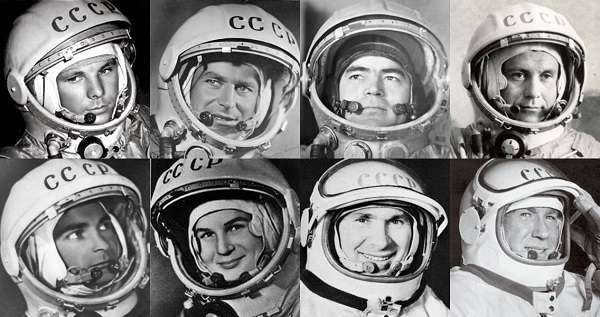
However, if we don’t have the memories of the explorers, it is unlikely that we will be able to surpass the boundaries of accessible (visible) space. Going to other galaxies and the progress of space exploration will cease.
Being a space nation, our country earned this “title” after the successful flight of Gagarin. It was not just a national achievement or a source of pride, but also a claim for global dominance. The Russians brought back not only glory, but also valuable knowledge from the depths of space.
Countries all over the world recognized the new “space” tactical advantage for any military operation, which could be referred to as “space wars” in today’s reality.
Yuri Gagarin, hailing from the Kashinsky village in the early 1900s, was an exceptional individual. His educational pursuits were disrupted by the domestic conflict at the time. However, six years after the Germans’ failed attempts to conquer the Union, Gagarin enrolled in the prestigious Saratov technical school, where his fascination with aviation took flight. Just five years later, he gained admission to a renowned flying school.
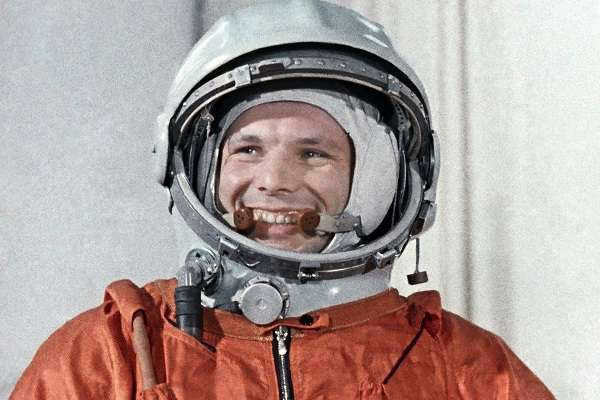
By venturing into the depths of space for the first time, Yuri managed to accumulate over two hundred hours of flight time. In April of 1961, he spent slightly over one hundred minutes (108) outside our planet aboard the “Vostok-1” spacecraft. The landing was a success.
The Americans, in their pursuit of gaining public recognition, were forced to allocate significant funds in their battle against the “red country”. Victory could bring a sense of spiritual uplift to the nation in decline.
The Soviets did not seek validation for their space program funding, but instead chose to highlight only the exceptionally successful missions. They believed that the USSR’s program was incapable of failure. They were mistaken.
Below is a chronological list of Soviet Union cosmonauts, their spacecraft names, flight dates, and additional information.

The Remarkable Journey of Konstantin
Konstantin Petrovich Feoktistov, a valiant space explorer, had the opportunity to spend a day in the vastness of space. Unfortunately, due to health reasons, he never had the chance for a second journey. These health issues arose as a result of his unfortunate capture during the war.
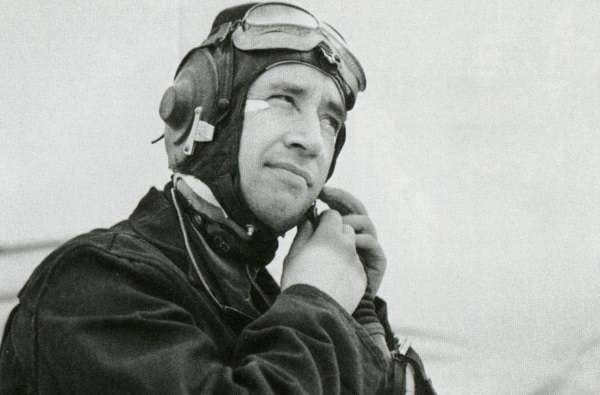
Following the war, he opted for the “nonviolent” path and obtained a PhD in sixty-seven.
Deceased astronauts from the Soviet Union and the Russian Federation
Numerous incidents related to the fatalities of pilots were classified for a significant period. Even at present, fifty years later, the exact count remains uncertain.
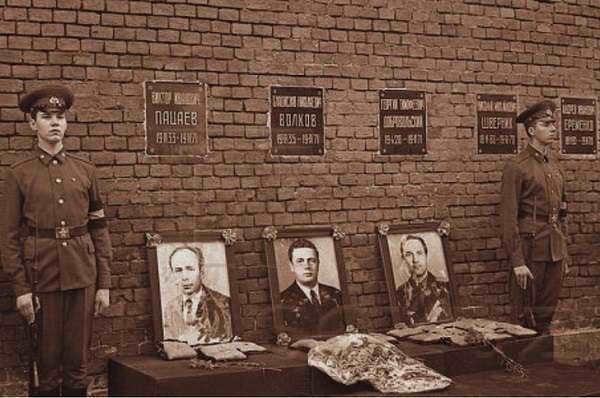
Not widely known is the story of Vladimir Komarov, who was a close friend of the Soviet hero Gagarin. Vladimir, who was considered the second most important cosmonaut after Gagarin, tragically lost his life during the unsuccessful return of his Soyuz-1 spacecraft. There have been rumors circulating about his final moments, with some claiming that he spoke out against the Soviet regime and held them responsible for his impending death.
The second space flight, which was officially successful, was led by German Titov, who was previously Gagarin’s understudy.
There exist numerous theories surrounding the space pilots who perished. The government’s secrecy has spawned numerous conjectures about individuals who are “missing” in space. Furthermore, there are assertions that flights occurred long before the initial flight in 1961. Apart from the manipulation of certain photographs in the media, there is no public proof.
All the evidence supporting the notion of “lost” astronauts has been deemed inconclusive, and some instances have turned out to be hoaxes. In the 1980s, an American journalist conducted his own inquiry into the mishaps in the Soviet Union, but also failed to discover any evidence.
Valentin Bondarenko
Valentin Bondarenko, a Russian cosmonaut pilot who has passed away, was undergoing testing in a hyperbaric chamber at the Air Force Research Institute-7 as part of his preparation for a forthcoming space mission. Similar to his fellow cosmonauts, Valentin was subjected to tests involving isolation and silence. As the tenth day of his stay in the hyperbaric chamber was drawing to a close, Valentin’s journey took an unexpected turn.
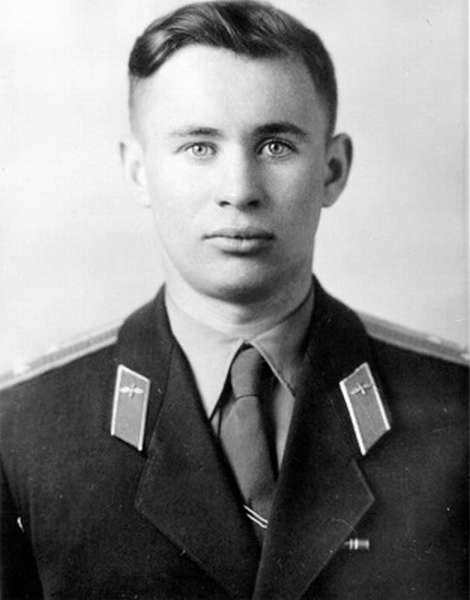
After completing one of the medical experiments, Valentin Vasilyevich removed special sensors from his body, cleaned the attachment sites with an alcohol-soaked swab, and accidentally discarded it carelessly. By mistake, the swab landed on the coil of a hot electric stove and immediately caught fire. The flames quickly spread to Valentin’s woolen training suit, causing it to ignite.
When the barocamera was opened, Valentin was still alive. However, despite the doctors’ efforts to save him for eight hours in the hospital, he ultimately succumbed to the severe burn shock that was incompatible with life. Nineteen days before the scheduled inaugural space flight, Valentin Bondarenko, a member of the cosmonaut training group, tragically passed away.
Vladimir Mikhailovich Komarov
He was born on March 16th in the Orenburg region in the year 1927. In 1945, he successfully completed his aviation training at the Borisoglebsk aviation school. He held the seventh position in the list of cosmonaut pilots. Vladimir had the privilege of being part of two historic space missions, as he embarked on two separate journeys aboard the first-generation spacecrafts, namely “Soyuz” and “Voskhod”.
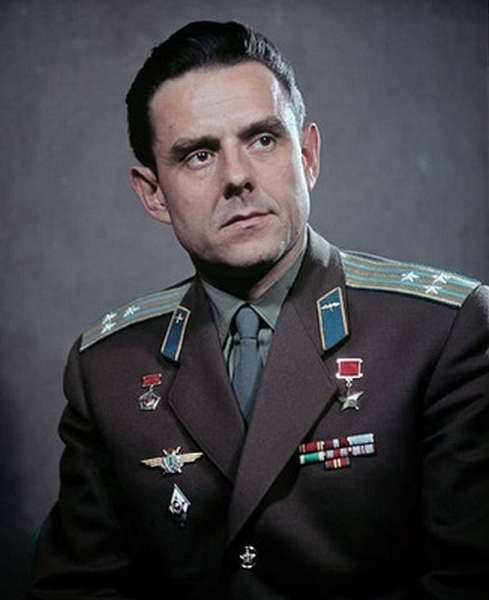
In October 1964, the initial space mission was carried out without the use of spacesuits due to limited space. The mission was a success as Komarov spent slightly over 24 hours in space before safely returning to Earth using the soft landing system.
During the second flight, numerous abnormal incidents and minor accidents occurred right from the start, serving as warnings of imminent trouble. At the last phase, the vehicle experienced an uncontrolled rotation and crashed into the ground in the Adamovsky district of the Orenburg region, due to the failure of the parachute landing system. The impact was at a high speed, causing the vehicle to collapse and catch fire. It was in April of the sixty-seventh year that the second-generation “Soyuz” spacecraft burned up.
He was born in Aktobe, on June nineteenth, in the thirty-third year, on the territory of what is now known as Kazakhstan.
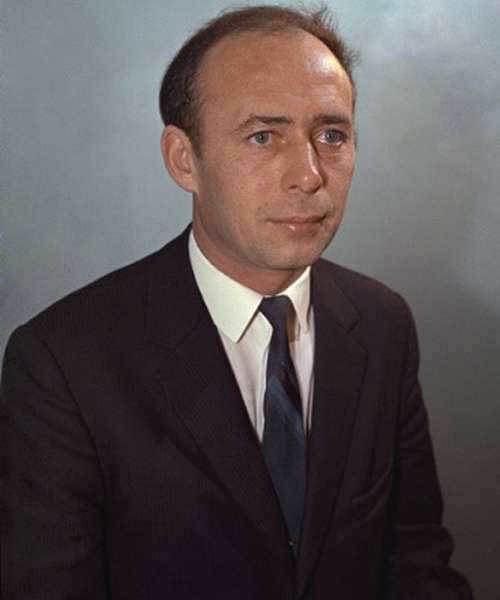
In the year fifty-eight, he secured a position at the renowned Korolev design bureau. Thirteen years later, he embarked on a voyage as a research engineer aboard the Soyuz-11. He spent a total of twenty-three days in space, stationed at the orbital station known as “Salyut-1”.
Unfortunately, during the Soyuz-11’s return to Earth, a depressurization incident occurred, resulting in the tragic deaths of all three crew members – Viktor Patsayev, Georgy Dobrovolsky, and Vladislav Volkov. In the same year of 1971, they were posthumously awarded the prestigious title of “Hero of the Soviet Union”.
Vladislav Volkov
Vladislav Volkov, who was born in Moscow, arrived two years after Patsayev. He attended the Moscow Aviation Institute and subsequently joined the Korolev Design Bureau. As an accomplished spacecraft designer, Vladislav Volkov has contributed significantly to the development of various spacecraft, such as the Vostok and Voskhod.
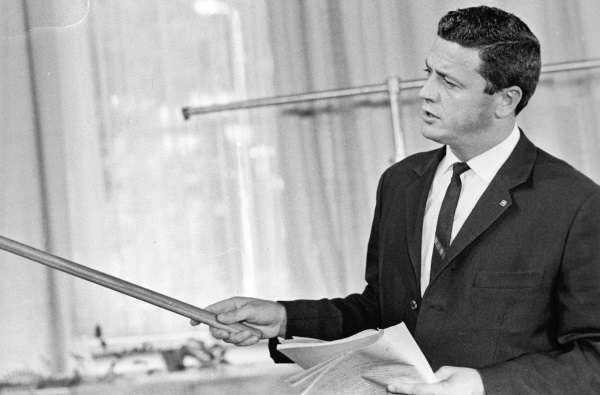
The initial space exploration mission occurred aboard the Soyuz-7 spacecraft in 1969 and lasted for a duration of four days and twenty-two hours. Unfortunately, the second expedition, which took place in the seventy-first year, resulted in the tragic deaths of Patsayev and Dobrovolsky due to the ship “Soyuz-11” experiencing a loss of pressure.
Georgy Dobrovolsky
Georgy was born on the first day of summer in 1928 in Odessa. In 1944, he was taken captive by Romanian occupation forces and received a 25-year sentence of penal servitude. However, within a month, Georgi was freed by local residents who paid off the prison guard.
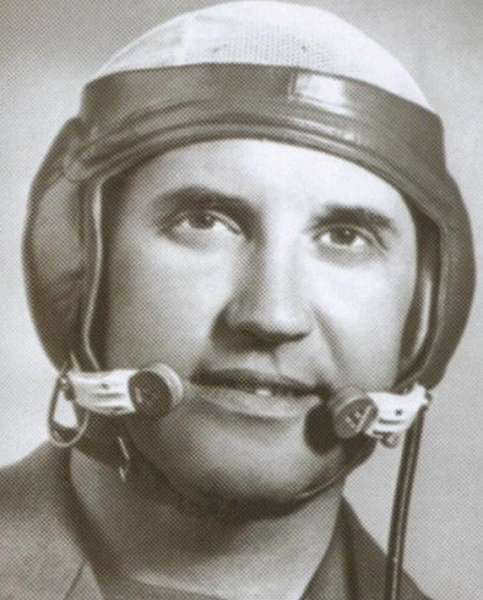
Following the liberation of his hometown from occupation, he enrolled in a specialized air force school, completing his studies in 1946. He then attended Chuguev Aviation School, serving as a fighter pilot before eventually graduating from the Air Force Academy (now known as the Yuri Gagarin Air Force Academy).
In January 1962, at the age of 33, George Timofeevich received an invitation to undergo training in the cosmonaut squadron. Dobrovolsky was being prepared for the lunar program. In 1971, he embarked on his inaugural mission aboard the Soyuz-11 spacecraft, which tragically ended in disaster. All three crew members, in the prime of their lives, perished.
Women cosmonauts from the USSR and Russia
The stories of women who dedicated themselves to the field of space exploration are truly remarkable.
Valentina Tereshkova
Valentina, known by her call sign “Chaika,” holds the distinction of being the first woman to venture into space, and remains the only woman to have done so alone.
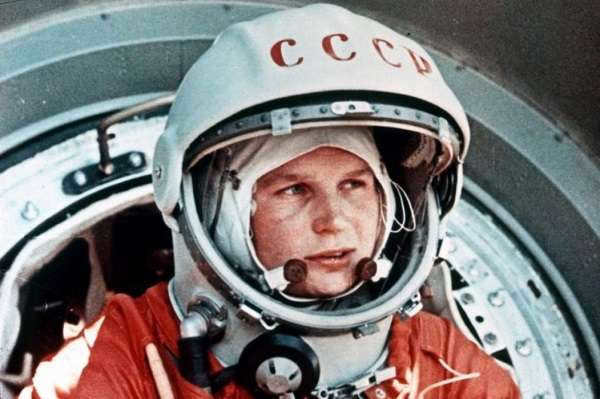
Valentina Vladimirovna was born on March 6, four years prior to the start of the Russian war. At the age of fifty-three, she completed 7 grades of school and then went on to finish three more grades while also working and assisting her family. With a keen musical ear, she dedicated time to learning how to play the domra.
Valentina’s previous occupations before becoming a cosmonaut:
- worked as a bracelet maker at the Tire Plant in Yaroslavl
- operated a roving machine at the Technical Textile Works in the same city
- was a student in the correspondence department of the Technical School of Light Industry, specializing in cotton spinning as a technician-technologist
- served as a secretary of the Komsomol Committee
- In 1962, out of 100 applicants, she was chosen for the female cosmonaut training squadron.
- Valentina completely fulfilled all the requirements for selection, including being between 170 cm and below 70 kg in weight, being a parachutist, and being under 30 years old.
- In addition to her excellent preparation for the flight and successful completion of all tests, the Soviet authorities also took into account her social status (she was from the working class) and her ability to lead an active social life.
On June 16, 1963, she made her historic flight aboard the spacecraft “Vostok-6”. Valentina spent nearly three days in space, orbiting the Earth 48 times. She kept a logbook and took photographs of the planet.
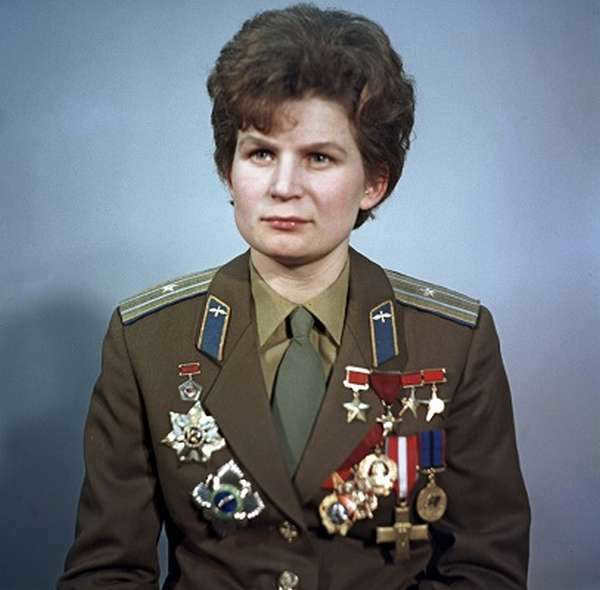
Following her triumphant return, Valentina assumed the role of a cosmonaut instructor, serving in this capacity until April 1997.
Post-spaceflight, Valentina completed her studies at the Zhukovsky Air Force Academy, successfully defending her thesis. She went on to become a professor at the Zhukovsky Academy, publishing over fifty scientific papers. This extraordinary individual was even prepared to embark on a one-way journey to Mars.
Elena Vladimirovna Kondakova
Elena, who was born in Moscow in 1957, holds the distinction of being the first Russian woman to embark on a lengthy journey into the vastness of outer space.
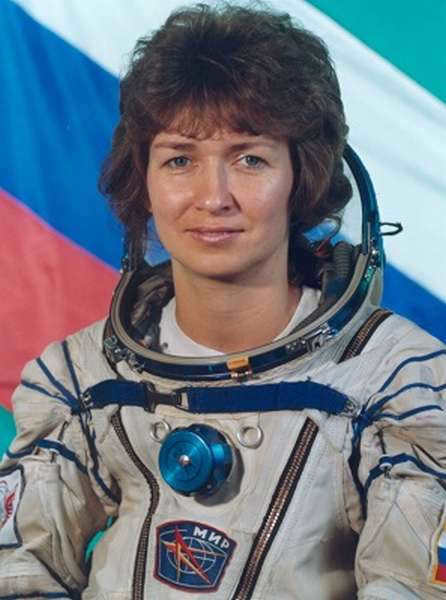
In the year ninety-four, after the Union had ceased to exist, Elena embarked on her flight. She returned to Earth in March ’95, following a five-month stay on the “Mir” space station. Her second journey occurred in May 1997, aboard the US shuttle Atlantis, lasting from the 15th to the 24th.
Here, we present a roster of the female squadron. While some of these courageous women have passed away, it is important to remember these six names:

Russian astronauts

Where do Russian astronauts receive training?
The Gagarin Flight and Space Training Center is the primary facility for Soviet and Russian Roscosmos. "Star City" was established in the 1960s in the Shchyolkovsky district near Moscow.

The head of the training center is specified as Krikalev S. G. Towards the end of the same decade, the center was named after the first individual to venture into outer space.
A relatively new facility for preparing individuals for space travel is situated in the forest, concealed from public view. Gaining access to the “town” is challenging.
Surrounded by forest, this secluded administrative territory is home to a population of six thousand. Every five years, a deputy is elected, and all residents are under the authority of a large Russian corporation.
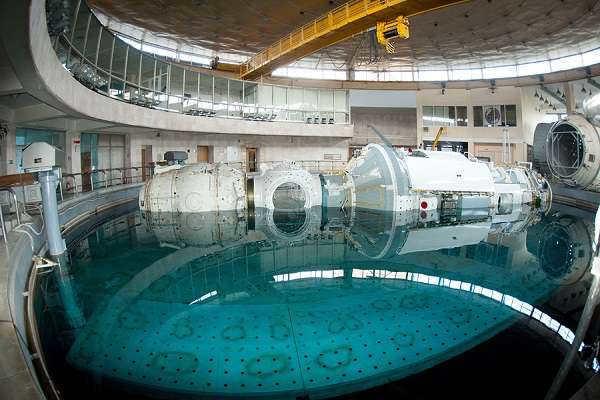
Very few journalists or reporters from the West have been granted access to the treasury of Russian cosmonautics, the place where the brave explorers of deep space were prepared for their missions.
There is only one photographer who has been able to capture stunning images of the top-secret Mitch complex, and his name is Karunaratne. He was given permission to travel 48 kilometers away from the capital city and witness the training center where the iconic cosmonaut known as “Kedr” (Gagarin’s call sign) underwent extensive training.





